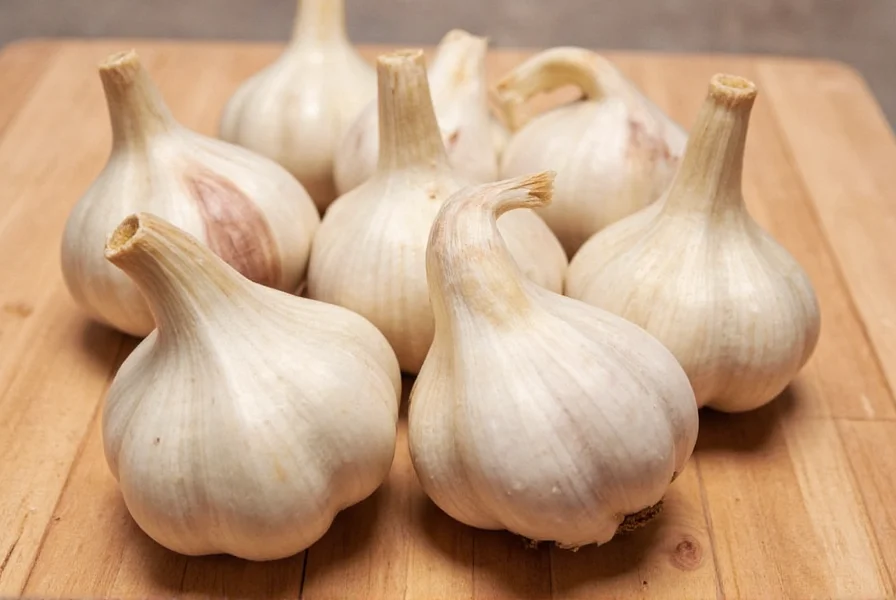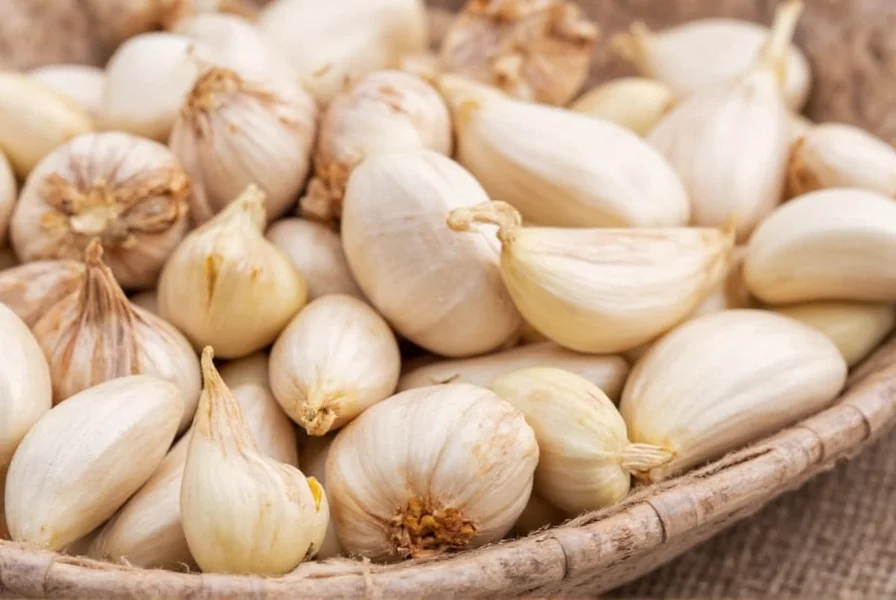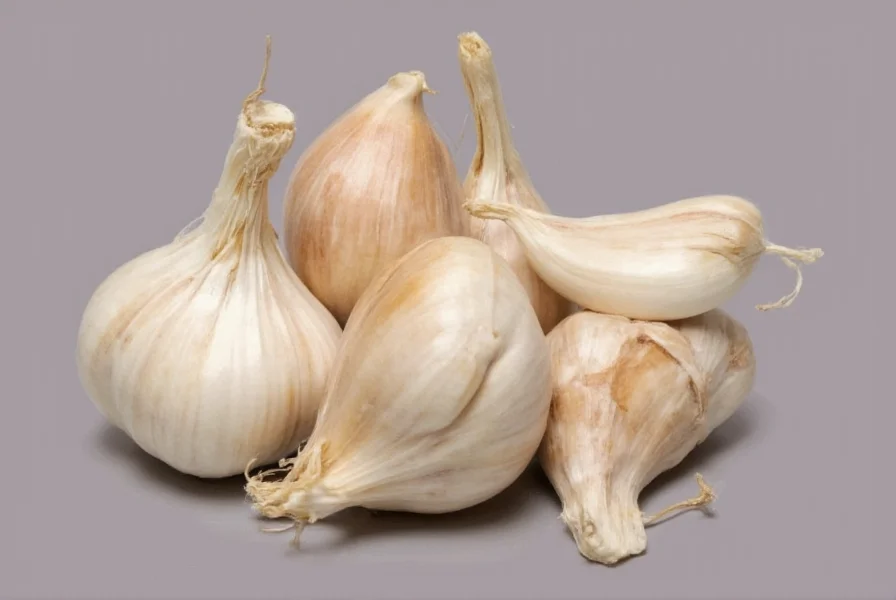What Exactly Are Garlic Cloves?
Garlic cloves represent the fundamental building blocks of a garlic bulb. Each bulb consists of multiple individual cloves arranged in layers around a central stem. These cloves serve as storage organs for the garlic plant, containing concentrated nutrients that support growth when planted.
When examining a garlic bulb, you'll notice each clove has a pointed end and a flat end where it connected to the bulb's base. The outer layer consists of thin, papery skin that protects the moist, ivory-colored flesh inside. This protective layer helps maintain freshness and prevents moisture loss.

Garlic Clove Measurements and Kitchen Equivalents
Understanding garlic measurements proves essential for precise cooking. The size of individual cloves varies significantly, affecting recipe outcomes. Here's a practical conversion guide for home cooks:
| Garlic Form | Equivalent to 1 Medium Clove |
|---|---|
| Fresh garlic clove (medium) | 1 clove (about 1/2 inch long, 1/4 inch diameter) |
| Minced fresh garlic | 1/2 teaspoon |
| Chopped fresh garlic | 1 teaspoon |
| Garlic powder | 1/8 teaspoon |
| Garlic salt | 1/4 teaspoon |
| Bottled minced garlic | 1/2 teaspoon |
Professional chefs recommend adjusting these measurements based on garlic variety and personal taste preferences. Elephant garlic, for instance, produces much larger cloves with milder flavor compared to hardneck varieties.
Nutritional Profile of Fresh Garlic Cloves
A single raw garlic clove (approximately 3 grams) contains:
- 4.5 calories
- 1 gram carbohydrates
- 0.2 grams protein
- Trace amounts of fiber
- 2% of daily manganese requirement
- 1% of daily vitamin B6 and vitamin C
- Small amounts of calcium, copper, and selenium
The true nutritional power of garlic comes from its phytochemical compounds, particularly allicin. This compound forms when garlic cells are damaged through cutting, crushing, or chewing. Allicin then breaks down into various organosulfur compounds responsible for garlic's health benefits.
Evidence-Based Health Benefits of Garlic Consumption
Research supports several health benefits associated with regular garlic consumption. A comprehensive review published in the Journal of Nutrition analyzed multiple clinical trials examining garlic's effects on human health.
Cardiovascular health represents one of the most well-documented benefits. Studies show that consuming one to two garlic cloves daily may help maintain healthy blood pressure levels and support cholesterol management. The active compounds in garlic appear to promote vasodilation and reduce arterial stiffness.
Garlic's antimicrobial properties have been recognized since ancient times. Modern research confirms that allicin demonstrates antibacterial, antiviral, and antifungal effects. While not a replacement for medical treatment, incorporating fresh garlic into your diet may provide additional immune support during cold and flu season.

Selecting and Storing Garlic for Maximum Freshness
Choosing quality garlic begins at the grocery store or farmers market. Look for firm bulbs with tight, papery skins that feel heavy for their size. Avoid bulbs with soft spots, green sprouts, or signs of mold. The cloves should feel solid when gently squeezed.
Proper storage significantly extends garlic's shelf life. Store whole bulbs in a cool, dark place with good air circulation. A mesh bag or wire basket works better than plastic containers, which trap moisture and accelerate spoilage. Under ideal conditions (60-65°F with 60-70% humidity), garlic can remain fresh for 3-6 months.
Once you separate cloves from the bulb, their shelf life decreases substantially. Individually peeled cloves last approximately one week in the refrigerator. For longer storage, submerge peeled cloves in olive oil and refrigerate for up to three weeks. Freezing whole cloves preserves them for up to six months, though texture changes may occur.
Effective Methods for Preparing Garlic Cloves
Proper preparation maximizes both flavor and health benefits. The enzymatic reaction that creates allicin requires time to develop after cutting or crushing. For optimal benefits, allow prepared garlic to rest for 10 minutes before cooking.
Several techniques exist for peeling garlic cloves efficiently:
- The smash method: Place clove on cutting board, lay flat side of chef's knife on top, and apply firm pressure to loosen skin
- The shake method: Place cloves in a sealed container and shake vigorously to separate skins
- The microwave method: Heat cloves for 10-15 seconds to loosen skins (use with caution)
When cooking, add garlic toward the end of the process to preserve its beneficial compounds. High heat destroys allicin, so sauté garlic gently in olive oil over medium-low heat until fragrant but not browned.
Common Substitutions and When to Use Them
While fresh garlic cloves provide superior flavor, substitutions become necessary when time constraints exist or fresh garlic isn't available. Understanding appropriate alternatives helps maintain recipe integrity:
- Pre-minced garlic in jars: Use 1:1 substitution for fresh minced garlic, though flavor intensity may vary
- Garlic powder: Ideal for dry rubs and spice blends; use 1/8 teaspoon powder per medium clove
- Garlic salt: Contains approximately 3 parts salt to 1 part garlic; adjust overall salt in recipe accordingly
- Roasted garlic: Provides milder, sweeter flavor; one roasted clove equals 2-3 raw cloves in intensity
Chef's tip: When substituting dried garlic products for fresh, add them early in the cooking process to allow rehydration and flavor development. Fresh garlic works best added later to preserve its distinctive bite.











 浙公网安备
33010002000092号
浙公网安备
33010002000092号 浙B2-20120091-4
浙B2-20120091-4